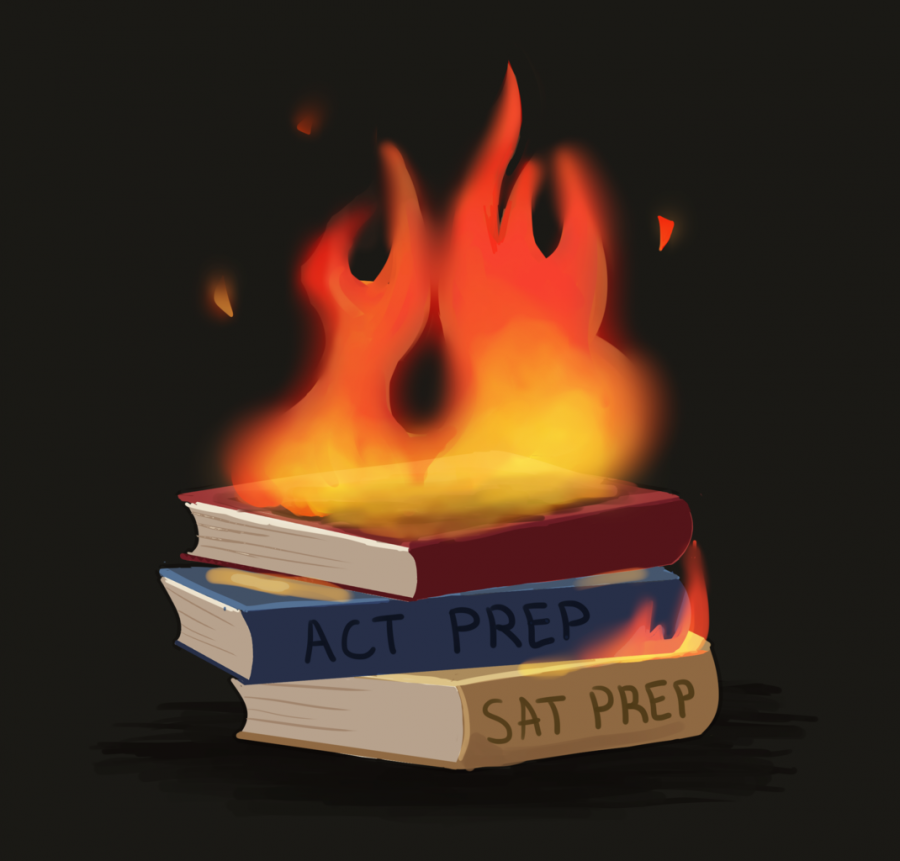Changes to standardized testing policies are only the start of a more significant shift in the college admission process
September 20, 2020
For many high school juniors, the reality of college applications are realized by the pressure to perform on standardized tests that play a large role in determining what schools one applies and gets accepted into. However, because of test center closures rooted in the COVID-19 pandemic, many universities in the United States have removed the ACT/SAT requirement for applicants applying in the 2021 admission cycle and beyond. As of June 26, “more than 1,240 of the nation’s 2,330 bachelor’s degree-granting schools have said they will not require students to submit ACT/SAT scores when they apply for fall 2021 admission,” according to The National Center for Fair & Open Testing. Notably, all seven Ivy League institutions decided to remove their testing requirement for students applying to the fall 2021 admission cycle. Most drastically, the University of California is no longer able to accept standardized testing scores as an evaluative aspect of a student’s application. This policy following a California judge’s order that the school system will not be able to use test scores during the current pandemic, according to Forbes.
Because testing scores are often a large aspect and determinant in a student’s admission to specific universities, students have mixed emotions regarding the new admission realities when applying to college. For obvious reasons, many students who feel that their ACT/SAT score does not accurately represent their abilities may be thrilled with the admission policy changes that no longer require a test score for an application. While this is undoubtedly a positive for students who are unable to get their desired score on a particular test, there are wide-spread benefits to a test-optional policy that have already been revealed through schools choosing to adopt this policy years before the COVID-19 pandemic.
The University of Chicago, a test-optional school since June 2018, is an example of a school that has implemented the policy for years and documented the positive application shifts as a result. Because admission tests have shifted to a representation of how much test preparation and tutoring a student’s parents are able to afford as opposed to their level of intelligence, it is no surprise that the University of Chicago recorded a record number of applications and acceptances of more socio-economically disadvantaged students. Specifically, the University increased overall enrollment by seven percent, “enrollment of first-gen and low-income students by 20 percent, rural students by 56 percent, and it enrolled 14 veterans after having none the previous year.” However, the University was still able to lower its admission rate “to 6 percent and raise its average SAT score,” according to Inside Higher Education. Not only did the test-optional policy allow the University of Chicago to admit more diverse classes, but it also increased their competitiveness and increased their overall prestige.
Seemingly producing strictly positive results—although some would see the changing of the status-quo of over-representation of caucasian and upper-class students as negative—a test-optional policy appears inevitable in the ever-growing movement for increased equity in higher education. By elevating students from backgrounds with economic disadvantages, the University of Chicago is at the forefront of diversifying the academic and professional world.
With more schools than ever-adapting test-optional policies, similar results that the University of Chicago recorded are expected. In the coming years, schools will have to decide whether to maintain a test-optional admission policy or to ignore economically underprivileged students and maintain a testing policy that often favors wealth over intelligence.
It is vital schools validate that by maintaining an admission policy that does not rely heavily on a faulty test, they are actively contributing to a more even socio-economic playing field by connecting disadvantaged students with opportunity. Furthermore, one’s evaluative essays and grades in the context of their course-load are far more accurate indicators of ability and future potential. While economic divides remain in education systems, and are revealed in higher-education demographics, schools that maintain test-optional policies will be crafting a new educational standard that confronts current inequities.



